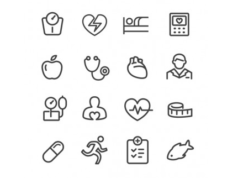
Patient safety is the focus of newly published updates to consensus statements that address the use of antithrombotic drugs by individuals who may require regional anaesthesia or interventions targeting acute or chronic pain.
The lengthy statements, published in tandem in the April 2018 issue of Regional Anesthesia and Pain Medicine, aim to protect patients taking anticoagulants, which slow down blood clotting, or antiplatelet drugs, which affect clotting by preventing platelets from clumping. Both can increase the odds that a patient could experience an adverse event during regional anaesthesia or interventional spine or pain procedures.
“These guidelines represent a painstaking look at bleeding events from case reports, pharmacological data, and information gleaned from federal and industry sources. While they are often only best guesses as to the true incidence of specific scenarios, they should be judged over time by their preventive effects on the safety of a population of patients who receive acute or chronic block procedures,” says Marc A. Huntoon, the journal’s editor in chief and an author of one of the guidelines. “Short of an all-inclusive data repository of both the number of events and the total number of procedures, they are probably the best guidelines we can develop.”
Regional anaesthesia update
The American Society of Regional Anaesthesia and Pain Medicine (ASRA) developed the new regional anaesthesia statement in conjunction with the European Society of Anaesthesiology (ESA) and the Society for Obstetric Anesthesia and Perinatology (SOAP).
Since the publication of the last regional anaesthesia (RA) statement in 2010, a number of new oral anticoagulant medications have been approved by the United States Food and Drug Administration (FDA), nearly all of which were released with a black box warning regarding the risk of spinal hematoma. The new statement addresses the use of these new direct oral anticoagulants for the first time. These drugs include rivaroxaban (Xarelto), apisaban (Eliqis), edoxaban (Savaysa), and dabigatran (Pradaxa). Precautions for all of the new drugs are given. For example, the authors state that there is justification to proceed with a neuraxial block among patients taking apixaban, but only after at least a 26- to 30-hour time interval between the last dose and the subsequent neuraxial puncture and/or catheter manipulation/removal.
Interventional spine and pain procedure update
The new statement regarding the use of antithrombotics in interventional pain procedures supersedes guidelines issued in 2015 and draws on experts from ASRA, the European Society of Regional Anaesthesia and Pain Therapy, the American Academy of Pain Medicine, the International Neuromodulation Society, the North American Neuromodulation Society, and the World Institute of Pain.
The authors note that although the regional anaesthesia anticoagulation guidelines are largely appropriate for the low- and intermediate-risk categories, high-risk interventional spine and pain procedures may require different precautions. The new statement draws on evidence from recent reviews evaluating bleeding complications in patients undergoing such procedures, the development of the new regional anaesthesia/acute pain guidelines, and the FDA-approval and use of new anticoagulants and antiplatelet medications.
The authors remind clinicians to consider differences in the patient population seeking relief from chronic pain. Patients with neck or back pain undergoing epidural steroid injections or other spinal interventions may have spinal abnormalities including spinal stenosis or spondylosis, for example, putting them at greater risk for adverse effects. Similarly, patients who have had various spine surgeries may develop fibrous adhesions and scar tissue, altering the epidural space. Bleeding risk may also be greater among patients taking several medications with antiplatelet effects, such as aspirin, nonsteroidal anti-inflammatory drugs (NSAIDs), and certain antidepressants (eg, serotonin reuptake inhibitors (SRIs).











